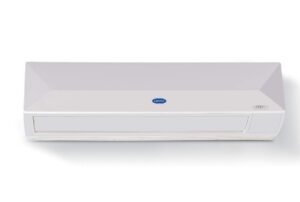How to Choose a Metal Business Card Supplier?

Choosing a metal business card supplier involves several important steps. Start by evaluating the material quality; request samples to confirm durability. Check for customization options to make sure your design stands out. Review their production techniques to ensure precision and high standards. Compare pricing structures, including bulk discounts and hidden fees. Evaluate the supplier’s customer service, noting response times and communication quality. Finally, consider delivery times, especially if you have tight deadlines. Each of these factors will help you make an informed decision. Explore the specifics of these points to make the best choice for your business cards.
Evaluate Material Quality
When selecting a metal business card supplier, you should first assess the quality of the materials they offer. Start by examining the material durability. High-quality Metal Kards should stand the test of time and resist wear and tear. Ask the supplier about the specific metals they use. Is it stainless steel, aluminum, or perhaps brass? Each type of metal has its own unique properties and can affect the longevity and appearance of your card.
Next, explore the metal composition. The makeup of the metal will influence not only the card’s durability but also its weight and finish. For instance, a card made from a higher grade of stainless steel will be more resistant to corrosion and scratches compared to one made from a lower grade. Knowing the metal composition will help you understand what you’re investing in and make sure that your cards leave a lasting impression.
You should also request samples to physically inspect the cards. This way, you can feel the weight, check the thickness, and see the finish up close. A reliable supplier will readily provide samples for your evaluation.
Check Customization Options
After evaluating the material quality, it’s important to explore the customization options that a metal business card supplier offers. Customization is key to making your card stand out and reflect your brand’s identity. Start by examining the design flexibility the supplier provides. Can they accommodate intricate designs, unique shapes, or specific color schemes? A supplier with high design flexibility can bring your creative vision to life.
Next, consider the options for logo customization. Your logo is the face of your brand, and it should be prominently featured on your business card. Check if the supplier can precisely etch, emboss, or engrave your logo. Some suppliers might even offer color printing for logos, adding another layer of personalization.
Additionally, ask about other customizable features like text layout, font choices, and finishes. Do they offer matte, glossy, or brushed finishes? Can you add special effects like cutouts or texture?
Review Production Techniques
When reviewing production techniques, you should focus on the materials and finishing options available from the supplier. Make sure they meet high precision and quality standards to guarantee your business cards stand out.
Understanding these factors will help you choose a supplier that aligns with your brand’s image.
Materials and Finishing Options
Explore a variety of materials and finishing techniques to create striking, durable metal business cards that stand out. Start by considering the base material for your cards. Common choices include stainless steel, aluminum, and brass. Each offers unique attributes regarding weight, durability, and aesthetics. Stainless steel is known for its strength and modern look, while aluminum provides a lighter feel and a sleek finish. Brass, on the other hand, exudes a classic, luxurious vibe.
When it comes to finishing, you have multiple color options to make your cards truly unique. You can choose from traditional metallic hues or opt for vibrant, custom colors to match your brand’s identity. Some suppliers offer anodizing, which not only adds color but also enhances the card’s durability.
Texture variety is another important factor. Textured finishes can range from brushed and matte to polished and etched. Brushed finishes provide a subtle, sophisticated look, while polished ones offer a mirror-like shine. Etching can add intricate designs or logos, giving your card a tactile feel that draws attention.
Precision and Quality Standards
Ensuring your metal business cards meet high precision and quality standards involves carefully reviewing the production techniques used by your supplier. You need to focus on how they handle tolerances consistency and defect rates to guarantee you get excellent cards every time.
First, ask about their machinery and technology. Advanced equipment often means better precision and lower defect rates. Laser cutting and CNC machining are typically more accurate than older methods.
Next, look into their quality control processes. Do they inspect each card individually or just a sample batch? Consistent inspection methods help maintain high standards and reduce errors.
Consider their material handling. Proper storage and handling of metal sheets can prevent scratches and other defects before production even begins.
Lastly, check their tolerances consistency. Ask for sample cards and measure them. Are the dimensions and details uniform across multiple samples? This can indicate the reliability of their production techniques.
Compare Pricing Structures
Comparing the pricing structures of different metal business card suppliers can help you find the best value for your investment. Start by looking for suppliers that offer bulk discounts. If you’re ordering a large quantity of cards, these discounts can greatly reduce your overall costs. Don’t just glance at the prices for smaller orders; make sure to check how the prices scale when ordering in bulk.
Next, be wary of hidden fees. Some suppliers may advertise low base prices but tack on additional charges for design services, customization options, or expedited shipping. These hidden fees can rapidly add up, making what seemed like a great deal much more expensive than anticipated. Always ask for a detailed quote that breaks down all potential costs before making a decision.
Also, compare the quality and features included in each pricing tier. Some suppliers might offer higher-quality materials or more intricate designs at a slightly higher price, which could be worth the extra investment.





